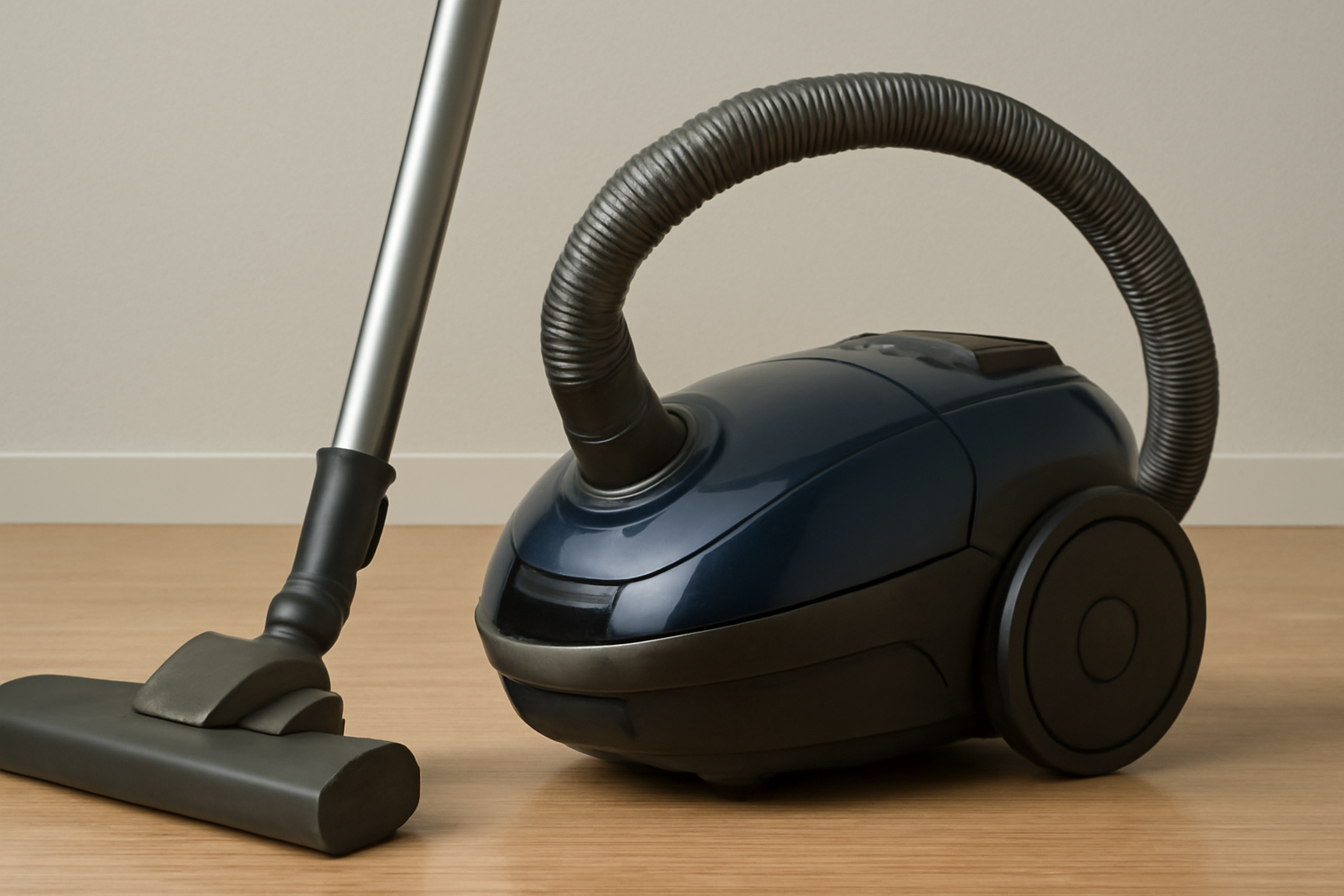
Every vacuum brand wants to build a “Quiet Vacuum Cleaner.”
Every R&D department claims they “lowered decibels.”
Every distributor wants to advertise “low noise.”
Every consumer wants a machine that doesn’t sound like a jet engine taking off.
And yet…
Most “quiet vacuums” still sound loud to users.
Why?
Because noise is not measured only by decibels.
Noise is a psychological experience — not just an engineering number.
This article breaks down why vacuums fail to sound quiet, even if lab tests say otherwise, and what manufacturers of Upright Vacuum Cleaners and Household Vacuum Cleaners must understand to engineer true acoustic comfort.
🔊🧠 1. Consumers Don’t Hear dB — They Hear Emotion
A vacuum can measure:
68 dB
72 dB
75 dB
…and still FEEL loud.
Because humans do not evaluate noise using objective measurement — we evaluate it using psychoacoustic indicators:
sharpness
roughness
modulation
tonal peaks
irregular vibration
emotional discomfort
Example:
A 70 dB constant “smooth wind” noise is acceptable.
A 65 dB high-pitch whine is unbearable.
This is why consumers often say:
“The numbers look fine, but it sounds harsh.”
Decibels lie.
Emotions don’t.
🔧🔩 2. High-Pitch Frequencies Are the Real Enemy
Vacuum cleaners create sound through:
motor rotation
air turbulence
sealing vibration
brushroll oscillation
cyclone resonance
The human ear finds high-pitch frequencies extremely irritating.
Cheap vacuums generate strong tonal peaks at:
2 kHz
4 kHz
6 kHz
These frequencies feel:
aggressive
“sharp”
annoying
fatiguing
So a Cordless Vacuum Cleaner that measures lower dB but has higher pitch will feel louder than a more powerful model with better tuning.
Pitch is more important than power.
🌀📉 3. Cyclone Whistle: The Most Underestimated Noise Source in Vacuum Design
Most factories obsess over motor noise.
But the cyclone architecture can generate:
whistling
hissing
overtone resonance
vibration harmonics
Why?
Because air enters cyclone chambers at high velocity.
If the geometry is wrong:
even a premium Quiet Vacuum Cleaner will whistle
noise increases as dust accumulates
filters amplify turbulence
airflow becomes unstable
This is why some vacuums sound “acceptable” on day 1
but “annoying” on day 30.
Cyclone noise = airflow physics + dust interaction.
🐕🧵 4. Brushroll Resonance Is the Hidden Noise Amplifier
The brushroll creates:
torque pulse
vibration
micro-oscillation
If poorly engineered, it generates:
floor resonance
furniture vibration feedback
oscillations through the handle
harmonic feedback
Even best vacuums on a budget fail here because:
bearings are low grade
roller weight is imbalanced
torque fluctuation is unchecked
bristle distribution is uneven
Brushroll noise is rarely tested deeply enough — yet it is one of the loudest parts of real-world vacuum use.
🏠🔉 5. Home Architecture Changes Perceived Loudness
Where a vacuum is used matters dramatically.
Hardwood floors
→ amplify vibration
→ reflect air noise
→ increase pitch
Excellent Vacuum Cleaner for Allergies models often perform poorly on hardwood surfaces due to acoustic reflection.
Carpets
→ absorb noise
→ dampen brush vibration
→ reduce whine
Large rooms
→ echo noise
→ amplify mid-frequency tones
Small rooms
→ intensify high-frequency pitch
A vacuum may sound quiet in a lab,
but loud in a real home.
🚪🔬 6. Noise Changes as the Vacuum Ages (This Is Why Returns Spike After 30–60 Days)
Noise drift is a real engineering phenomenon.
A vacuum becomes louder due to:
HEPA seal loosening
dust buildup
micro cracks
turbine imbalance
bearing wear
brushroll deformation
duct alignment shift
increased motor load
Users describe this as:
“It sounded quiet at first, now it’s noisy.”
This is why many Household Vacuum Cleaners experience an after-sales explosion at week 4–8.
Noise must be consistent — not just low.
📢🎧 7. The Human Brain Hates Inconsistency More Than Volume
A vacuum may be loud,
but if it is consistent, the user tolerates it.
A vacuum may be quiet,
but if it:
modulates
surges
pulses
fluctuates
vibrates
…the user perceives it as defective.
Noise stability > Noise level.
Even Upright Vacuum Cleaners that measure 75 dB can FEEL quieter than 68 dB vacuums if their tonal patterns are stable.
🧩🔍 8. Low-Noise Engineering Is NOT About Reducing Volume — It’s About Shaping Sound
Sound shaping techniques include:
lowering peak frequencies
smoothing transitions
tuning brushroll torque
optimizing cyclone angles
dampening housing vibration
adjusting duct curvature
isolating motor mounts
using thicker seals
altering airflow velocity
balancing rotor harmonics
True “quiet design” is a science —
one that 90% of manufacturers still underestimate.
🧠🚀 9. What Engineers & Manufacturers Must Do to Build a Truly Quiet Vacuum
✔ Tune frequency instead of only reducing dB
✔ Redesign cyclones to eliminate whistle
✔ Stabilize brushroll torque
✔ Improve bearing quality
✔ Reduce motor vibration harmonics
✔ Reinforce sealing to prevent air scream
✔ Test noise on hardwood floors
✔ Test noise after dust loading
✔ Test noise after 50-hour aging
✔ Measure psychoacoustic comfort, not just dB
A vacuum must be engineered to sound powerful but smooth — not “weak but high-pitched.”
This is the secret behind every successful Quiet Vacuum Cleaner.
Suitable For
vacuum distributors
OEM/ODM factories
R&D engineers
QC teams
acoustic testing labs
international brand owners
floorcare category managers
performance validation teams
Hashtags
#lanxstar #uprightvacuumcleaners #householdvacuumcleaners #quietvacuumcleaner #cordlessvacuumcleaner #bestvacuumsonabudget #vacuumcleanerforallergies #vacuumacoustics #psychoacoustics #noisedesign #airflowengineering #cyclonenoise #brushrolltechnology #motordesign #suctionstability #engineeringtruth #productdevelopment #oemodm #chinavacuumfactory #globaldistribution #soundshaping #noisecontrol #hardwoodfloorcleaning #floorcaretechnology #filtrationengineering #runtimeperformance #vacuumperformance #premiumvacuum #budgetvacuum #consumerinsights #productreliability #acousticcomfort #globalbuyers #mechanicaldesign #airductengineering #cycloneengineering #acousticvalidation #qcengineering #industrialdesign #heatmanagement #motorharmonics #durabledesign #smartcleaning #cleanhome #floorcareinnovation #engineeringanalysis #valuevacuum #vacuumindustry2025
















